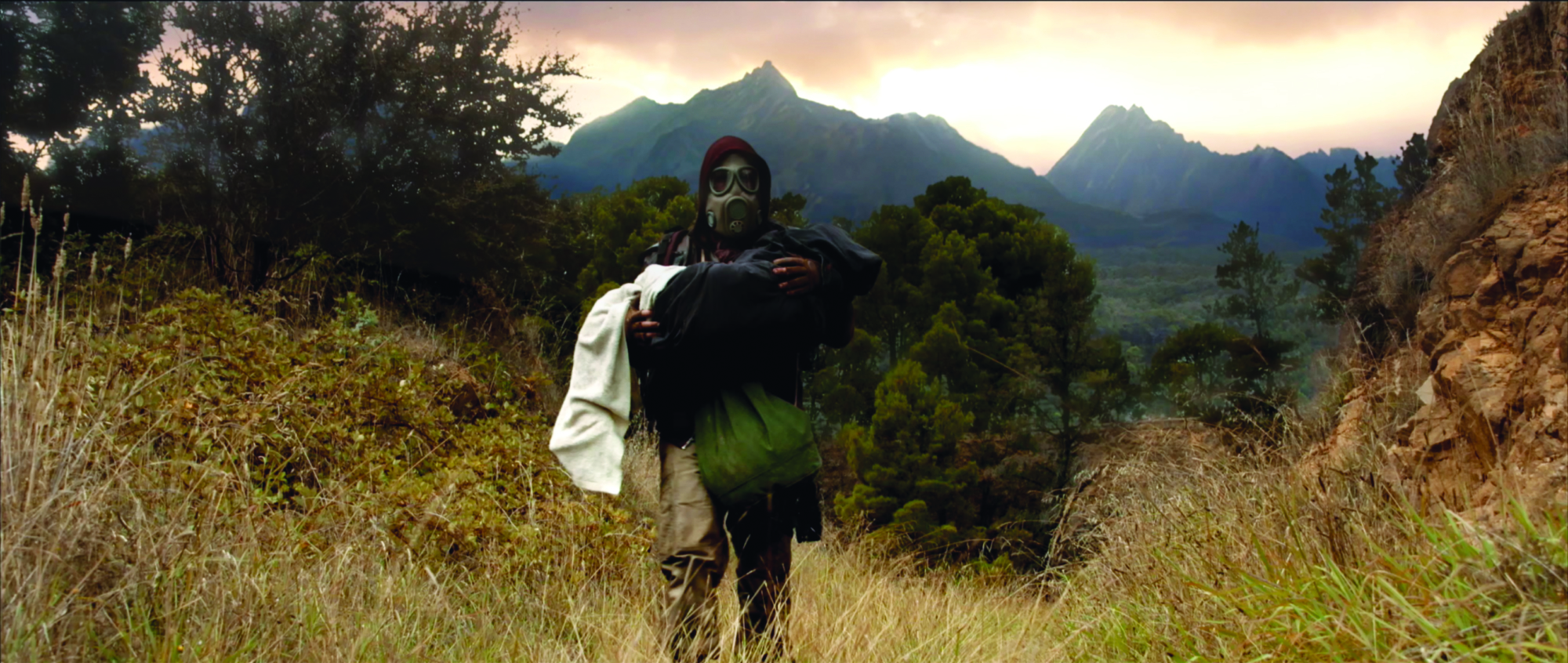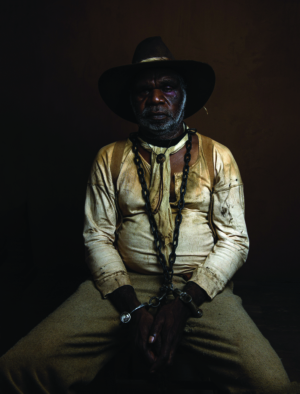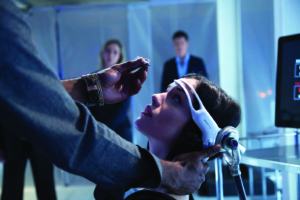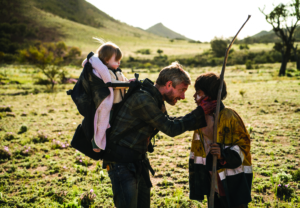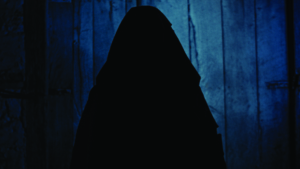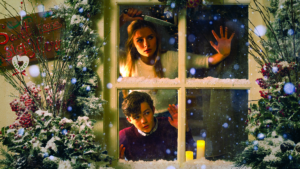Blue World Order (Ché Baker & Dallas Bland, 2016) is a science fiction action-adventure set during the aftermath of a nuclear war that has annihilated the Northern Hemisphere, with the world’s remaining population controlled by a self-appointed totalitarian government using a biotech virus. The film was shot entirely in Canberra and features heavyweights Billy Zane, Bruce Spence and Jack Thompson among the cast, alongside newcomer Jake Ryan in the lead role.
I speak to Baker and producer/co-writer Sarah Mason about the benefits of dreaming big, thinking global, creatively utilising unique locales and learning from experienced mentors when making an ambitious low-budget film project a reality.
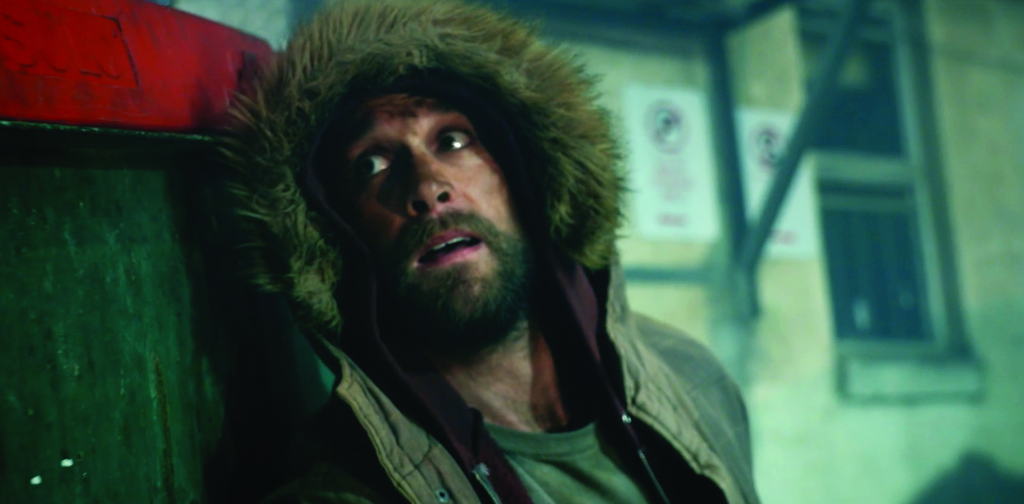
Oliver Pfeiffer: Where did the concept behind Blue World Order stem from?
Ché Baker: Initially, Dallas and I were interested in a kidnapping film concerning a father-daughter relationship. We were very aware that all the bells, whistles and effects in the world mean nothing if [the audience] doesn’t care what is happening. That led to a really tight father-daughter bond, and then a sci-fi kidnapping film.
The film deals with very pressing issues such as free will. Refreshingly, however, the arguments for and against aren’t so clear-cut in the narrative.
CB: That grew from my novel,[1]The Rule of Knowledge, published under the pen-name Scott Baker, Hachette Australia, Sydney, 2013; see <http://www.ruleofknowledge.com>, accessed 9 November 2017. in a grander sense, about two competing philosophies that were both quite plausible but couldn’t coexist in that scenario: the idea of having control over people but for a very necessary reason […] then the idea of free will being the important, most basic human right we have. Those competing philosophies really interested me because, very often, you can have a very clear ‘right’ and ‘wrong’, but it was very interesting to say, ‘What if you had two ways of doing things that were both quite right in their own way, but they just can’t coexist?’
‘The local market is very small, so I think you either decide to do something unashamedly Australian or it’s got to appeal to an international market … We intentionally made a sci-fi film because it’s the kind of genre film that can sell internationally even if you don’t have big stars in it.’
– Ché Baker
From a production perspective, what’s also impressive about Blue World Order is how epic it all feels – especially for a production shot in Canberra, with such a low budget. Were you always unafraid to think big?
CB: We wanted to show [that], if you do things in a particular way, you could get a lot of bang for your buck on screen. We designed it to shoot in Canberra and do it all locally. We wanted to show you could do a different kind of film and achieve quite a lot on a minuscule budget.
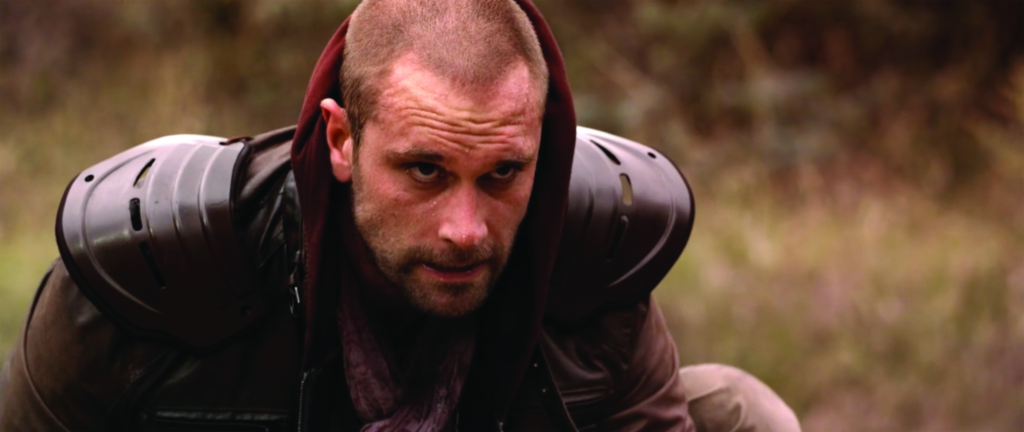
You have kinetic action scenes, impressive aerial shots and a big Mad Max–style climactic car-chase sequence, too!
CB: I think we were able to show off a lot of that. Obviously, we’re well aware of what the film is and we’re happy with what we were able to achieve on the budget; however, I also didn’t want to make any excuses for saying, ‘It’s a good film for a low- budget film,’ or, ‘It’s a good film for an Australian indie film.’ We kind of wanted to put it out there and let it speak for itself a bit.
It’s the scope that’s really quite impressive. Blue World Order doesn’t feel contained; it looks as though you’ve covered a lot of ground, geographically.
CB: In the story, it goes from Jake Slater [played by Ryan] being very concerned about himself and his daughter – with everything quite contained and tight – to his concerns being for the wider world, which opened [the film] up for the larger landscapes. We wanted to show off Canberra as a location and tried to get a lot of production value on screen by accessing a lot of what we had available to use locally and build that sense of scale you normally wouldn’t get on a film like this.
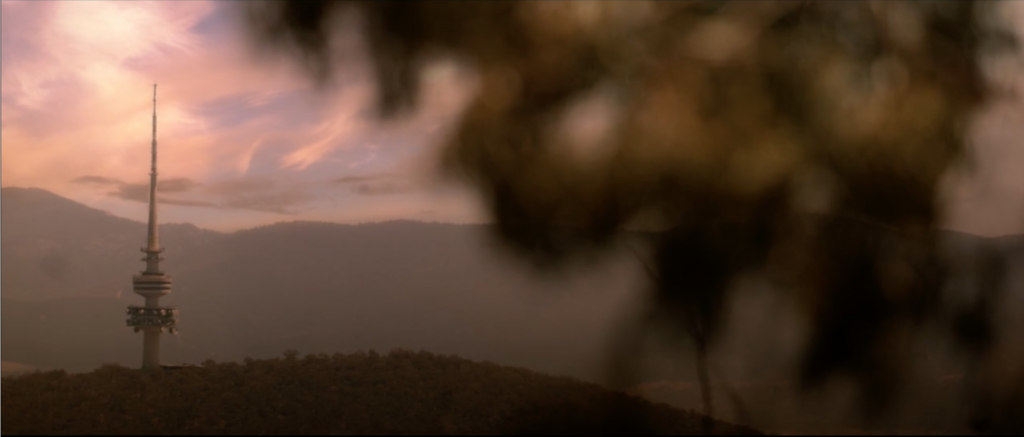
It’s certainly a great showcase for Canberra as a filming location. Yours was one of the first feature films to shoot there, I believe?
CB: We’ve had a lot of external [TV] production companies shoot there because they’re telling a political-thriller story or something similar. We’ve also had people try and do the local- film thing, but haven’t really gotten the budgets to the level where it might get distribution. I think Blue World Order is the first film of its kind, for sure: it’s not a political thriller, and has nothing to do with Parliament House or any of the tropes you get in Canberra. In a lot of ways, Canberra is a real microcosm of Australia – a lot of the things you can see in wider Australia, you can find within fifteen minutes of one another here.
After working on The Hobbit [An Unexpected Journey, 2012],[2]For which Baker worked as on-set colourist. I spoke to [director] Peter Jackson quite extensively about how he was able to create this whole ecosystem in Wellington, which happens to be one of the most unfriendly places to make a film – it’s beautiful, but also quite a harsh environment. Canberra is one of those places where we’ve got sunshine, a wide variety of locales and, logistically, it’s easier to get around, so it had all the things we needed to make a film on a tiny budget that looked a lot bigger than what it was.
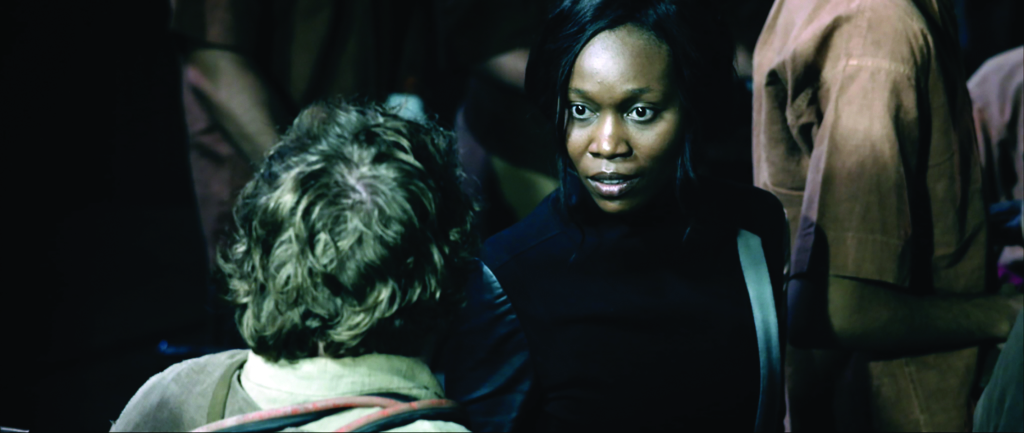
The film is also very consciously geared towards an international market: it isn’t specifically set in Australia, you have predominantly American accents and you’ve got an American name in the main cast, too. Do you feel more Australian filmmakers should be looking at the global market from the outset?
CB: The reality is that the local market is very small, so I think you either decide to do something unashamedly Australian or it’s got to appeal to an international market. I think, if you’re making a film just for Australia, [that can be] very limiting; however, there’s a lot of films that are very Australian that can appeal internationally, too. We intentionally made a sci-fi film because it’s the kind of genre film that can sell internationally even if you don’t have big stars in it. It was our best shot at getting a global audience without it being too Australia-centric.
It’s worth mentioning that your cast includes some cinema veterans. How did you attract these talents?
CB: We had them for about a day or two each, and that was one of the great ways of doing it the way we did; we had three locations in a day that you had to get around to, and you just couldn’t have done that anywhere else. We originally planned to make the film on a super low budget, but it really got to the point where we were thinking whether it would be worth seeing if we could cast up in these roles.
Sarah Mason: We actually had a meeting where we were discussing all our ideal people for each role, and one of us said, ‘Imagine if we got Billy Zane, Bruce Spence and Jack Thompson!’ and we all sort of laughed. And then it just happened.
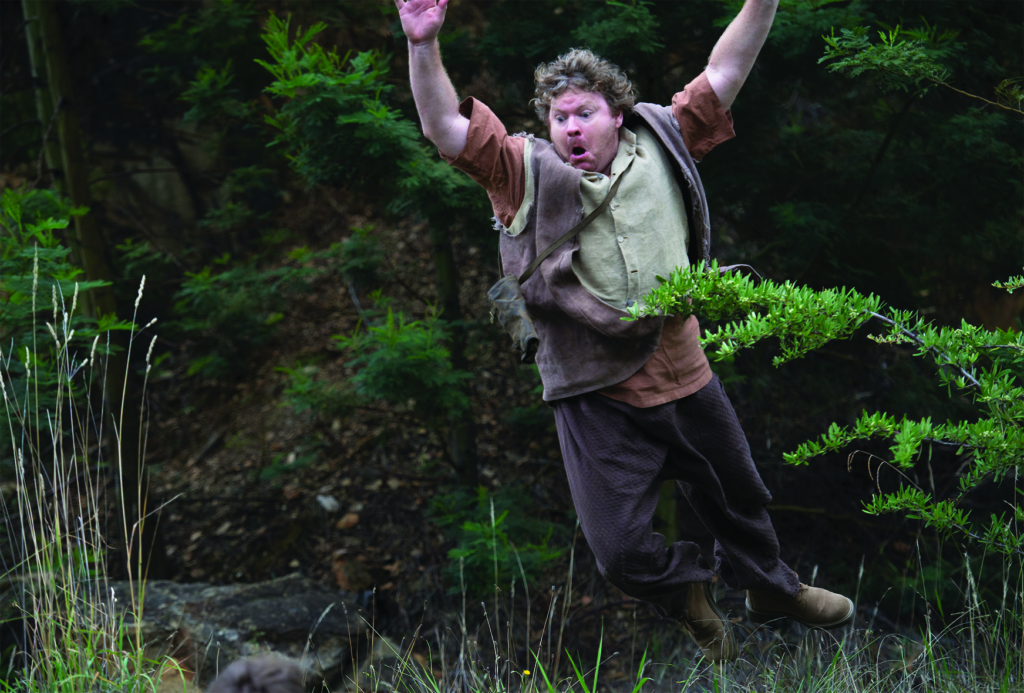
CB: With Jack, it was a very traditional thing. We didn’t realise he was a science fiction fan, and he just really loved the script – it was as simple as that. He was a real boost for the production: people were like, ‘Oh, we’re making a real movie!’ The same with Bruce: we only had him for a day and he was just perfect! The gold for us is when you go out with them for dinner, and they tell you their stories and give you so much wisdom that it becomes a masterclass. Directing Jack Thompson is like a masterclass in directing, too, because you learn very quickly what to do and what not to do.
SM: I think that, for a lot of the cast as well, it was a real pleasure […] to be able to work with these actors because they were in very dynamic roles and they were bouncing off each other. I think having some very experienced actors with that sort of gravitas and confidence in themselves affected the whole culture on set.
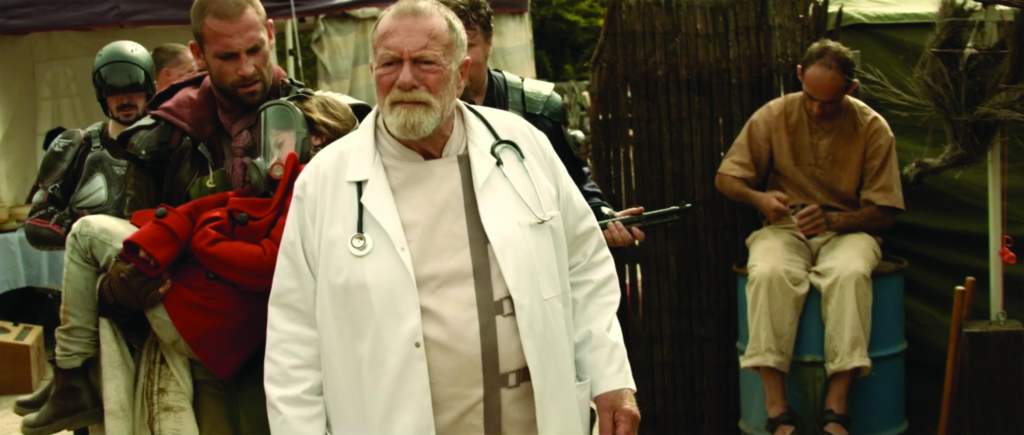
A film of this genre and on this scale requires a considerable amount of world-building, particularly in terms of the science behind it. How much time was spent on that?
CB: I wanted the science to be plausible, even if it’s not real. At the moment, it may not be real, but I spent quite a lot of time on the underlying sides of the genetic mutation, and how the radiation triggered stuff from bacteria, and all this sort of stuff that is hinted in the film. I spent a lot of time in the books making sure that the science works and makes sense […] It could be something that could be quite possible down the track.
The late Oscar-winning cinematographer Andrew Lesnie was a significant mentor for you, Ché. What were the best pieces of advice you took from him?
CB: I could write a book about Andrew Lesnie! He was generally one of the nicest, most generous people I have ever met. We became very good friends, and he became a mentor in a lot of ways. He would talk about everything, from old stories to how he achieved particular effects. Then he got me over to work with him on the Hobbit series. He never shot digital or 3D before The Hobbit; however, those were areas I had experience in, so it was a really good opportunity to contribute to the technology side while he was able to contribute his artistic side. He would’ve shot Blue World Order for us if he had been available, but he was super supportive and also very supportive of our own DOP [Robb Shaw-Velzen].
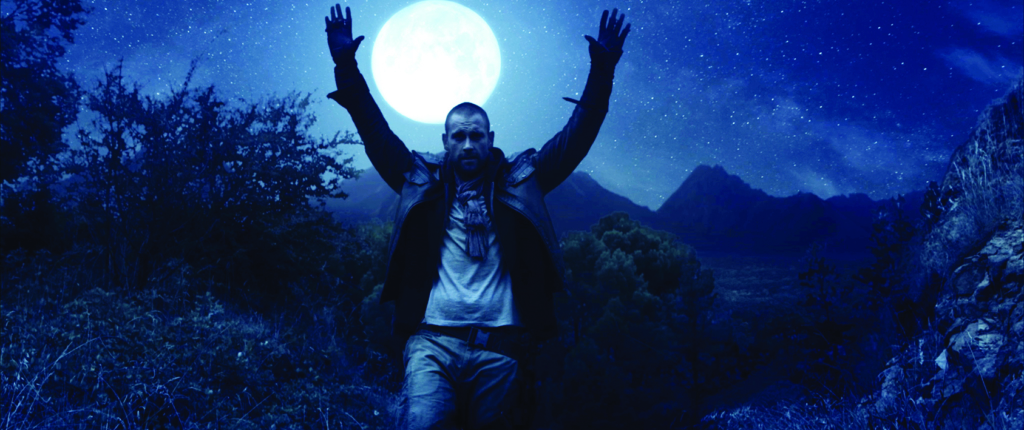
Without revealing anything, Blue World Order is left quite open-ended. Do you have further instalments or a series fleshed out?
CB: When we first started developing the story, we had a series. The Producer Offset for a feature film is 40 per cent, but it’s only 20 per cent for a series. We thought, if we take the first couple of ‘episodes’ and make it into a feature, that would be a way to actually get it done and leverage the Producer Offset. That was sort of the impetus for doing that. But I have the novel, and I have four [books] planned out that give the backstory to the war and what happens afterwards.
SM: There’s a lot more science that you can access in a novel, compared to a film, in some ways; I think there’s a different level of depth in the novel than in the series as it is mapped out at the moment. It’s just a different medium to communicate often quite complex things.
CB: A lot of our core audience don’t really care about the details if they take you out of the story. But there’s a lot more to the story and to [this] world. We would love to do the next film, but, ideally, I’d love to do a series because then you can have four full-time crews working on three episodes each throughout the year and have a really sustainable, ongoing industry. That’s the key, I think, to building sustainable production: to have projects that aren’t necessarily one-off things, but that keep people employed and build infrastructure as you go along. By that scale, you get better value and things will begin to look better for the same budget because you don’t have to reinvent the wheel every time you make a new project.
Endnotes
| 1 | The Rule of Knowledge, published under the pen-name Scott Baker, Hachette Australia, Sydney, 2013; see <http://www.ruleofknowledge.com>, accessed 9 November 2017. |
|---|---|
| 2 | For which Baker worked as on-set colourist. |
